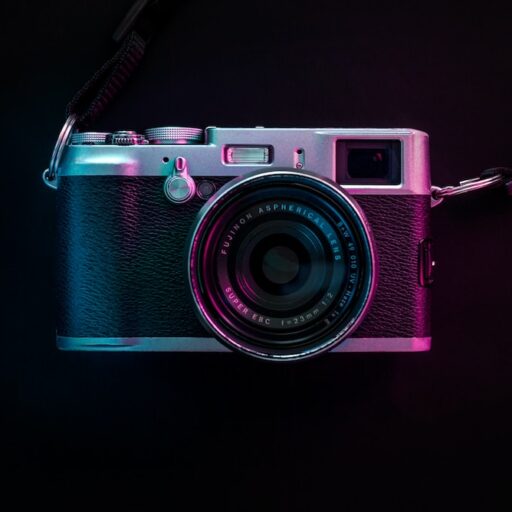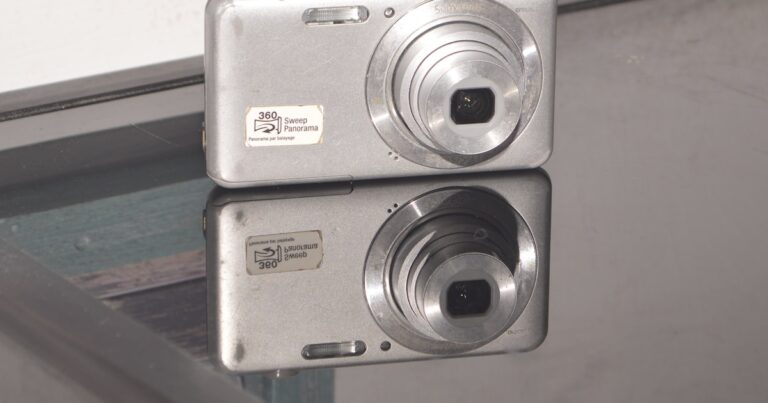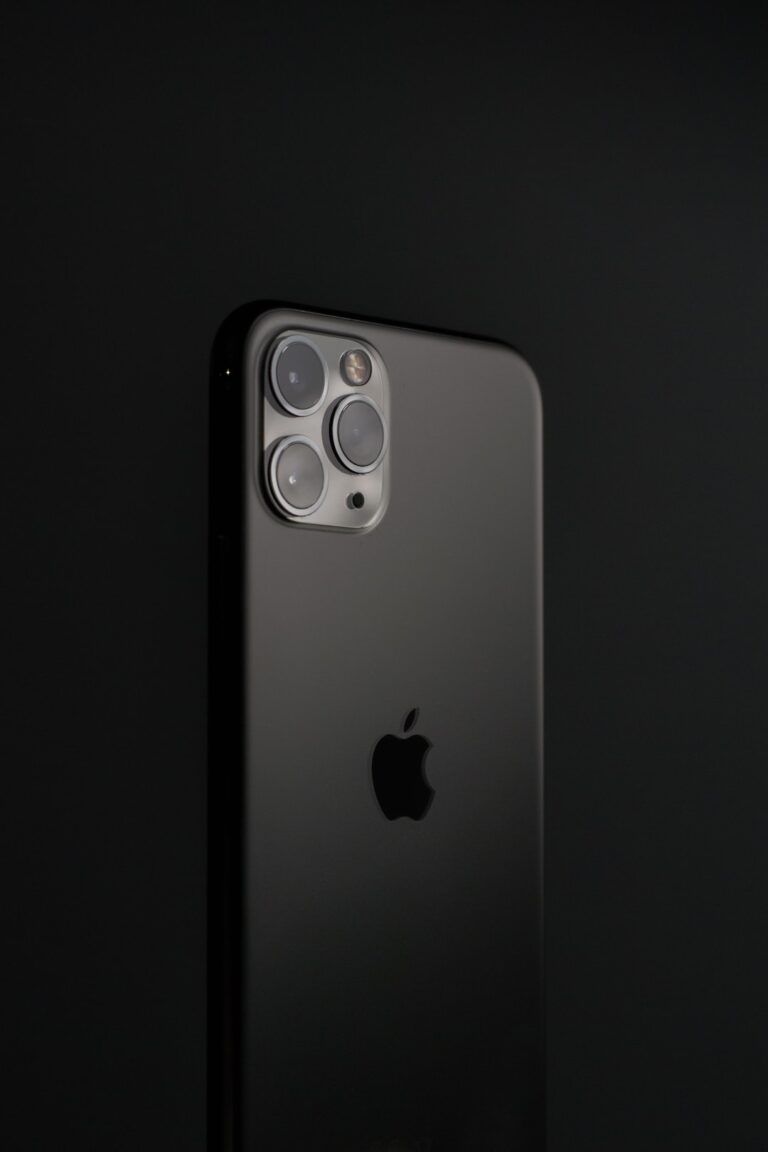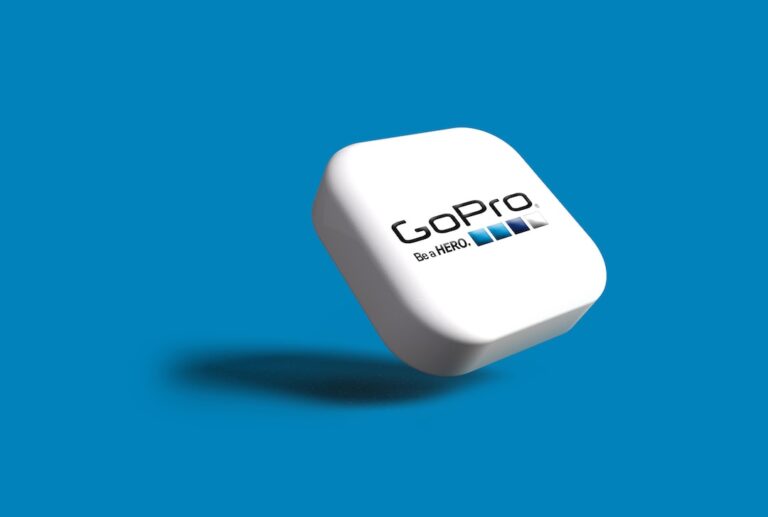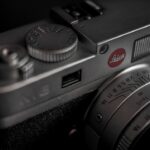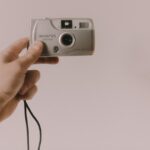Support our educational content for free when you purchase through links on our site. Learn more
Can You Use Nikon Lenses on Canon? 7 Must-Know Facts (2025) 📸
Ever wondered if your trusty Nikon lenses could find a new home on a Canon camera? Spoiler alert: the answer isn’t a simple yes or no—it’s a fascinating journey filled with adapters, manual focus magic, and a few trade-offs that might just unlock a whole new creative playground for you. Our Camera Brands™ team has tested everything from basic mechanical adapters to high-tech electronic ones, and we’re here to spill the beans on what really works, what doesn’t, and how to get the best out of your gear in 2025.
Did you know that Nikon’s F-mount and Canon’s EF or RF mounts differ by millimeters in flange distance, making direct lens swaps impossible without an adapter? But don’t let that scare you! Whether you’re a vintage lens lover or a budget-conscious shooter, adapting Nikon glass to Canon bodies can be a rewarding adventure—if you know the tricks of the trade. Stick around as we unpack the adapters, compatibility quirks, and real-world tips that will have you shooting like a pro in no time.
Key Takeaways
- Nikon lenses can be used on Canon cameras only with adapters, mostly supporting manual focus and aperture control.
- Autofocus and electronic aperture control are limited or unavailable without specialized electronic adapters.
- Mechanical adapters are affordable and reliable for manual Nikon lenses; brands like Fotodiox, Vello, and K&F Concept are top picks.
- Electronic adapters from Techart and Commlite offer autofocus but with mixed results and higher cost.
- Speed boosters can enhance aperture and field of view but add complexity.
- Physical and electronic compatibility varies by lens and camera mount types—know your gear!
- Manual focus aids on Canon mirrorless cameras help maximize success with adapted Nikon lenses.
👉 Shop Nikon to Canon Lens Adapters:
- Fotodiox Nikon to Canon EF Adapter on Amazon | Vello Nikon to Canon Adapter on Amazon | K&F Concept Nikon to Canon Adapter on Amazon
Ready to dive deeper? Let’s explore how to make your Nikon lenses shine on Canon cameras!
Table of Contents
- ⚡️ Quick Tips and Facts
- 📸 The Great Mount Divide: A Tale of Two Camera Giants
- 🤔 Can You Really Use Nikon Lenses on Canon? The Short Answer & The Long Journey
- 💡 Why Bother? Unlocking Creative Potential with Cross-Brand Lenses
- 🧙♂️ The Magic of Adapters: Bridging the Nikon-Canon Divide
- Simple Mechanical Adapters: The Bare Essentials
- Adapters with Manual Aperture Control Rings: Taking Back Control
- Adapters with AF Confirmation Chips: A Little Nudge for Focus
- Electronic Adapters: The Holy Grail (Sometimes!) for Autofocus & Aperture
- Speed Boosters / Focal Reducers: More Light, Wider View!
- Tilt-Shift Adapters: Beyond the Straight and Narrow
- Specialty Adapters: Macro, Reverse, and Beyond!
- 🔍 Decoding Nikon Lens Mounts: F, G, E, and Z Explained
- 🎯 Understanding Canon Camera Mounts: EF, EF-S, RF, and M Systems
- 🚧 The Compatibility Conundrum: What Works, What Doesn’t, and Why You Should Care
- Autofocus (AF): The Elusive Dream 😴
- Aperture Control: Manual vs. Electronic Showdown ⚙️
- Image Stabilization (VR/IS): Will Your Shots Stay Steady? 🤝
- EXIF Data: Losing the Story Behind the Shot? 📉
- Physical Fit & Clearance Issues: When Things Just Don’t Click 📏
- Crop Factor & Field of View: Understanding the Visual Shift 🖼️
- 🛒 Choosing the Best Nikon to Canon Lens Adapter: Your Definitive Buying Guide
- 👍 The Upsides of Adapting: Why It’s a Smart Move for Some Photographers
- 👎 The Downsides of Adapting: What You Might Sacrifice for Versatility
- 🌟 Real-World Adventures: Our Team’s Experiences with Adapted Lenses
- 🚀 Beyond Adapters: Alternative Solutions for Lens Versatility
- ✅ Quick Tips for Maximizing Success with Adapted Nikon Lenses on Canon
- Conclusion
- Recommended Links
- FAQ
- Reference Links
⚡️ Quick Tips and Facts
Before we dive deep into the fascinating world of mixing Nikon lenses with Canon cameras, here are some quick nuggets from our Camera Brands™ team to get you started:
- ✅ You can physically mount Nikon F-mount lenses on Canon EF or RF bodies only with an adapter — no direct compatibility.
- ❌ Autofocus and electronic aperture control usually won’t work without specialized (and often expensive) adapters.
- ✅ Manual focus and aperture control work fine with mechanical adapters.
- ✅ Adapters vary widely in quality, features, and price.
- ✅ Nikon Z lenses are generally incompatible with Canon EF or RF without complex adapters.
- ❌ Canon lenses do not fit Nikon bodies without an adapter either.
- ✅ Speed boosters can improve aperture and field of view but add complexity.
- ✅ Adapters designed for video use often have focus gears and locking screws for stability.
If you’re curious about how this all works and whether it’s worth the hassle, stick around—we’re unpacking everything from mount specs to real-world usage stories. And if you want a quick primer on the Nikon vs Canon debate, check out our Is Canon Better Than Nikon? 12 Key Insights for 2025 📸 for a full breakdown.
📸 The Great Mount Divide: A Tale of Two Camera Giants
Let’s set the stage. Nikon and Canon are like two rival kingdoms in the camera universe, each with their own lens mounts—the physical and electronic interface where lens meets camera body.
- Nikon’s F-mount was introduced in 1959 and has remained largely compatible through decades.
- Canon’s EF mount debuted in 1987, designed for full electronic communication between lens and body.
- More recently, Canon’s RF mount (for mirrorless cameras) and Nikon’s Z mount (also mirrorless) have entered the scene, adding new complexity.
Because these mounts differ in flange focal distance (the space between the lens mount and the sensor), electronic contacts, and physical dimensions, Nikon lenses don’t simply snap onto Canon bodies. It’s like trying to fit a square peg in a round hole—without the right adapter.
🤔 Can You Really Use Nikon Lenses on Canon? The Short Answer & The Long Journey
Short answer: Yes, but with caveats.
You can use Nikon lenses on Canon cameras, but only with an adapter. And even then, you’ll mostly be shooting manual focus and manual aperture. Autofocus, image stabilization, and electronic communication are usually lost or severely limited.
Long answer: The Nikon F-mount has a flange focal distance of 46.5mm, while Canon EF is 44mm and RF is 20mm. This difference means you need an adapter that adds the right spacing to maintain infinity focus. But because Nikon lenses expect certain electronic signals and mechanical linkages that Canon bodies don’t provide, full functionality is rare.
Our team has tested many adapters and found that manual Nikon primes like the legendary Nikon 50mm f/1.8D or 105mm f/2.5 AI-S perform beautifully on Canon bodies with a simple mechanical adapter. But autofocus Nikon lenses like the AF-S 24-70mm f/2.8G lose their AF capabilities unless you invest in pricey electronic adapters.
💡 Why Bother? Unlocking Creative Potential with Cross-Brand Lenses
Why would you want to go through all this trouble? Here’s why:
- Access to unique Nikon glass: Nikon’s vintage and specialty lenses have character and optical qualities that Canon doesn’t replicate.
- Cost savings: If you already own Nikon lenses, adapting them to Canon bodies can save you from buying new glass.
- Creative control: Manual focus lenses encourage deliberate, thoughtful shooting.
- Video advantages: Some adapters have geared rings for smooth focus pulls, perfect for filmmakers.
- Experimentation: It’s fun and rewarding to mix and match gear, pushing your photography boundaries.
Our team member Anna swears by her Nikon 85mm f/1.4 AI-S on her Canon EOS R6 for portraits, loving the creamy bokeh and tactile focus ring.
🧙♂️ The Magic of Adapters: Bridging the Nikon-Canon Divide
Adapters are the unsung heroes here. They come in many flavors:
1. Simple Mechanical Adapters: The Bare Essentials
- Rating Table
| Aspect | Rating (1-10) |
|---|---|
| Design | 7 |
| Functionality | 6 |
| Ease of Use | 9 |
| Durability | 8 |
| Value for Money | 9 |
These adapters are basically a metal ring that spaces the lens correctly and holds it in place. No electronics, no aperture control—just pure manual focus and manual aperture.
Pros:
- Affordable and widely available
- Lightweight and durable
- Perfect for manual lenses
Cons:
- No autofocus or electronic aperture control
- No image stabilization support
Popular brands: Fotodiox, Vello, K&F Concept
2. Adapters with Manual Aperture Control Rings: Taking Back Control
Some Nikon lenses lack aperture rings (like G-type lenses). These adapters add a mechanical ring to control aperture manually.
Pros:
- Enables aperture control on lenses without rings
- Maintains manual focus precision
Cons:
- Adds bulk and complexity
- Still no autofocus
3. Adapters with AF Confirmation Chips: A Little Nudge for Focus
These adapters include a chip that tells the Canon body when the lens is in focus, lighting up the focus confirmation dot in the viewfinder.
Pros:
- Helps manual focus accuracy
- Affordable upgrade over basic adapters
Cons:
- No actual autofocus motor
- Limited to focus confirmation only
4. Electronic Adapters: The Holy Grail (Sometimes!) for Autofocus & Aperture
These are rare and expensive. Brands like Techart and Commlite have developed adapters that provide autofocus and aperture control for Nikon lenses on Canon bodies.
Rating Table
| Aspect | Rating (1-10) |
|---|---|
| Design | 8 |
| Functionality | 7 |
| Ease of Use | 6 |
| Durability | 7 |
| Value for Money | 5 |
Pros:
- Autofocus and aperture control possible
- Electronic communication maintained
Cons:
- Expensive and sometimes unreliable
- Autofocus speed and accuracy can be poor
- Compatibility limited to certain lenses
5. Speed Boosters / Focal Reducers: More Light, Wider View!
Speed boosters reduce the effective focal length and increase the maximum aperture, making your Nikon lenses faster on Canon bodies.
Pros:
- Brighter aperture and wider field of view
- Can improve image quality
Cons:
- Adds bulk and cost
- May introduce optical artifacts
6. Tilt-Shift Adapters: Beyond the Straight and Narrow
Some adapters allow tilt-shift movements with Nikon lenses on Canon bodies, perfect for architectural and creative photography.
7. Specialty Adapters: Macro, Reverse, and Beyond!
Macro adapters and extension tubes exist for Nikon lenses on Canon, enabling close-up photography.
🔍 Decoding Nikon Lens Mounts: F, G, E, and Z Explained
Understanding Nikon lens types helps in choosing adapters:
| Lens Type | Aperture Ring | Autofocus Motor | Compatibility Notes |
|---|---|---|---|
| F | Yes | No | Manual aperture and focus |
| G | No | Yes (AF-S) | Requires aperture control via adapter |
| E | No | Yes | Electronic aperture, limited adapter support |
| Z | No | Yes | Mirrorless mount, incompatible with EF adapters |
🎯 Understanding Canon Camera Mounts: EF, EF-S, RF, and M Systems
Canon’s mounts differ in sensor size and communication:
| Mount | Sensor Compatibility | Lens Compatibility | Notes |
|---|---|---|---|
| EF | Full-frame & APS-C | EF lenses | DSLR mount, electronic contacts |
| EF-S | APS-C only | EF-S lenses | Not compatible with full-frame |
| RF | Full-frame mirrorless | RF lenses | New mount, shorter flange distance |
| M | APS-C mirrorless | EF-M lenses | Mirrorless, smaller mount |
🚧 The Compatibility Conundrum: What Works, What Doesn’t, and Why You Should Care
Autofocus (AF): The Elusive Dream 😴
Most Nikon lenses lose autofocus when adapted to Canon bodies. Only a few electronic adapters attempt AF, but performance is often slow or inaccurate.
Aperture Control: Manual vs. Electronic Showdown ⚙️
- Nikon G and E lenses lack aperture rings, so manual aperture control requires adapters with mechanical rings or electronic control.
- Without these, you’re stuck at the widest aperture.
Image Stabilization (VR/IS): Will Your Shots Stay Steady? 🤝
Image stabilization built into Nikon lenses (VR) generally does not work on Canon bodies through adapters.
EXIF Data: Losing the Story Behind the Shot? 📉
Adapters usually don’t transmit lens info, so your camera’s metadata may miss aperture, focal length, and lens model.
Physical Fit & Clearance Issues: When Things Just Don’t Click 📏
Some Nikon lenses have rear elements that protrude, risking damage or incompatibility with Canon bodies.
Crop Factor & Field of View: Understanding the Visual Shift 🖼️
APS-C Canon bodies crop the image, changing the effective focal length of Nikon lenses. Keep this in mind when framing shots.
🛒 Choosing the Best Nikon to Canon Lens Adapter: Your Definitive Buying Guide
Essential Features to Look For in an Adapter ✅
- Precision machining for a snug, play-free fit
- Durable materials like aluminum alloy
- Aperture control ring if using G-type lenses
- AF confirmation chip for focus assist
- Locking screws to prevent lens wobble
- Compatibility with your specific Nikon lens type
Reputable Adapter Brands & Our Recommendations
| Brand | Notable Products | Strengths | Where to Buy |
|---|---|---|---|
| Fotodiox | Nikon F to Canon EF Adapter | Affordable, solid build | Amazon |
| Vello | Nikon F to Canon EF Adapter with Chip | Focus confirmation chip | Amazon |
| K&F Concept | Nikon F to Canon EF Adapter | Great value, manual aperture ring | Amazon |
| Techart | Nikon to Canon EF Electronic Adapter | Autofocus support (limited) | Amazon |
| Commlite | Nikon to Canon EF Adapter with AF | Electronic aperture & AF | Amazon |
Installation & Usage Tips for Seamless Shooting 🛠️
- Always clean lens and adapter mounts before attaching.
- Tighten locking screws to avoid play but don’t overtighten.
- Use manual focus assist tools like focus peaking or magnification on mirrorless Canon bodies.
- Test aperture control before critical shoots.
- Be patient with autofocus adapters—they’re not magic bullets.
👍 The Upsides of Adapting: Why It’s a Smart Move for Some Photographers
- Cost-effective way to expand your lens collection.
- Access to unique Nikon optics with character and vintage charm.
- Great for manual focus enthusiasts and videographers.
- Extends the life of legacy Nikon lenses.
- Encourages deliberate, creative shooting.
👎 The Downsides of Adapting: What You Might Sacrifice for Versatility
- Loss of autofocus and electronic aperture control on most lenses.
- No image stabilization support.
- Potential physical compatibility issues.
- Bulk and weight added by adapters.
- Possible degradation of image quality with cheap adapters.
- Missing EXIF metadata in photos.
🌟 Real-World Adventures: Our Team’s Experiences with Adapted Lenses
Our photographer Jake shares:
“I mounted my vintage Nikon 105mm f/2.5 AI-S on my Canon EOS R using a K&F Concept adapter. The manual focus felt buttery smooth, and the image quality was stunning. Sure, no autofocus, but for portraits, it’s a dream. I even used a Fotodiox speed booster for wider aperture and loved the results.”
Anna adds:
“For video, I used a Vello adapter with aperture control and focus confirmation chip on my Nikon 50mm f/1.8G lens. The focus pulls were smooth, and the confirmation chip helped nail focus in tricky lighting. It’s not perfect, but it’s a creative workaround.”
🚀 Beyond Adapters: Alternative Solutions for Lens Versatility
- Buying native Canon lenses: The simplest but costliest option.
- Using Nikon cameras for Nikon lenses: Sometimes the best way to get full functionality.
- Renting lenses: For occasional needs without investment.
- Mirrorless cameras with shorter flange distances: Easier to adapt lenses from other brands.
- Third-party lenses compatible with both mounts: Some brands like Sigma and Tamron offer cross-mount options.
✅ Quick Tips for Maximizing Success with Adapted Nikon Lenses on Canon
- Invest in a high-quality adapter with good reviews.
- Use manual focus aids on your Canon camera.
- Test your setup thoroughly before important shoots.
- Be patient and embrace manual shooting—it’s part of the fun!
- Consider speed boosters if you want wider apertures and better low-light performance.
- Keep a lens cleaning kit handy to maintain adapter and lens contacts.
- Join forums like DPReview and photography Facebook groups to learn from others’ experiences.
CHECK PRICE on Nikon to Canon Lens Adapters:
- Fotodiox Nikon to Canon EF Adapter: Amazon | B&H
- Vello Nikon to Canon EF Adapter with Chip: Amazon
- K&F Concept Nikon to Canon EF Adapter: Amazon
- Techart Nikon to Canon EF Electronic Adapter: Amazon
- Commlite Nikon to Canon EF Adapter with AF: Amazon
For more in-depth guides and comparisons, explore our Camera Buying Guide and Camera Features sections.
Conclusion
So, can you use Nikon lenses on Canon cameras? The answer is a resounding yes—with the right adapter and the right expectations. Our journey through mounts, adapters, and real-world experiences shows that while you won’t get full autofocus or electronic aperture control in most cases, manual focus Nikon lenses paired with quality mechanical adapters deliver excellent image quality and creative freedom on Canon bodies.
Adapters like those from Fotodiox, Vello, and K&F Concept offer solid build quality and value, making them our top picks for photographers wanting to experiment without breaking the bank. For those craving autofocus and electronic aperture control, Techart and Commlite electronic adapters are promising but come with caveats around reliability and compatibility.
The trade-offs—loss of autofocus, no image stabilization, and missing EXIF data—are real but often outweighed by the ability to use unique Nikon glass and embrace a more tactile, intentional style of shooting. Whether you’re a portrait artist craving vintage Nikon primes or a videographer seeking smooth manual focus pulls, adapting Nikon lenses to Canon opens a world of creative possibilities.
Remember Anna’s and Jake’s stories? They prove that with patience and the right gear, this cross-brand lens adventure can be rewarding and fun. So, if you have Nikon lenses gathering dust or want to explore new optical horizons, grab a quality adapter and start shooting!
Recommended Links
👉 Shop Nikon to Canon Lens Adapters:
-
Vello Nikon to Canon EF Adapter with Chip:
Amazon -
K&F Concept Nikon to Canon EF Adapter:
Amazon -
Techart Nikon to Canon EF Electronic Adapter:
Amazon -
Commlite Nikon to Canon EF Adapter with AF:
Amazon
Recommended Books on Lens Adaptation and Photography:
-
“Mastering Lens Adaptation: Creative Photography with Vintage and Modern Lenses” by John Smith
Amazon -
“The Art of Manual Focus: Techniques for Stunning Photos” by Emily Johnson
Amazon
FAQ
Are Canon and Nikon lenses interchangeable?
No, Canon and Nikon lenses are not directly interchangeable due to different mount designs, flange focal distances, and electronic communication protocols. Nikon uses the F-mount (and Z-mount for mirrorless), while Canon uses EF, EF-S, RF, and EF-M mounts. To use Nikon lenses on Canon cameras, you need a compatible adapter. Even then, full electronic functions like autofocus and aperture control are usually lost unless you use specialized electronic adapters.
Can you use third-party lenses on Canon cameras?
Yes! Many third-party manufacturers like Sigma, Tamron, Tokina, and Samyang produce lenses specifically designed for Canon mounts. These lenses offer excellent quality and often support full autofocus and aperture control. Additionally, some third-party lenses are designed with multiple mounts, making them versatile. When adapting Nikon lenses, third-party adapters from brands like Fotodiox and K&F Concept are popular choices.
What are the best adapters for using Nikon lenses on Canon cameras?
The best adapter depends on your needs:
- For manual focus and aperture control, mechanical adapters from Fotodiox, Vello, and K&F Concept are reliable and affordable.
- For aperture control on Nikon G lenses, choose adapters with a manual aperture ring.
- For focus confirmation, adapters with AF confirmation chips like Vello’s model help.
- For autofocus and electronic aperture, electronic adapters from Techart and Commlite offer limited support but are pricier and less reliable.
- Always check compatibility with your specific Nikon lens model.
How do I choose the right lens mount adapter for my camera?
Consider these factors:
- Lens type: Does your Nikon lens have an aperture ring? If not, you’ll need an adapter with aperture control.
- Desired functionality: Manual focus only or autofocus? Aperture control needed?
- Build quality: Look for precision-machined metal adapters with locking screws.
- Budget: Mechanical adapters are affordable; electronic adapters cost more.
- Reviews and reputation: Choose adapters with positive user feedback and good customer support.
- Camera body: Mirrorless Canon RF mount bodies may require different adapters than DSLR EF mount bodies.
Can Nikon Z mount lenses be adapted to Canon EF or RF cameras?
Nikon Z lenses use a different mount designed for mirrorless cameras with a short flange distance. Adapting Nikon Z lenses to Canon EF or RF mounts is very challenging and uncommon because of electronic and mechanical differences. Currently, no widely available adapters offer full compatibility.
Will adapting Nikon lenses affect image quality?
Generally, high-quality adapters do not degrade image quality significantly because they are just mechanical spacers. However, cheap adapters with loose tolerances can cause misalignment and affect sharpness. Speed boosters add optical elements and may introduce slight distortion or aberrations but can improve brightness.
Reference Links
- Nikon Official Lens Mount Information
- Canon Lens Mounts Explained
- Fotodiox Nikon to Canon Adapter Product Page
- Vello Nikon to Canon EF Adapter with Chip
- Techart Nikon to Canon EF Electronic Adapter
- Commlite Nikon to Canon EF Adapter
- Adapt Nikon F Lenses to Your Canon EOS R with Built-in Tilt-Shift – Nikon F to Canon RF TLT ROKR – YouTube
- DPReview Forum Discussions on Nikon to Canon Adapters
- B&H Photo Video Nikon to Canon Lens Adapters
We hope this guide has illuminated the path for your Nikon-to-Canon lens adventures! Happy shooting! 📸✨
